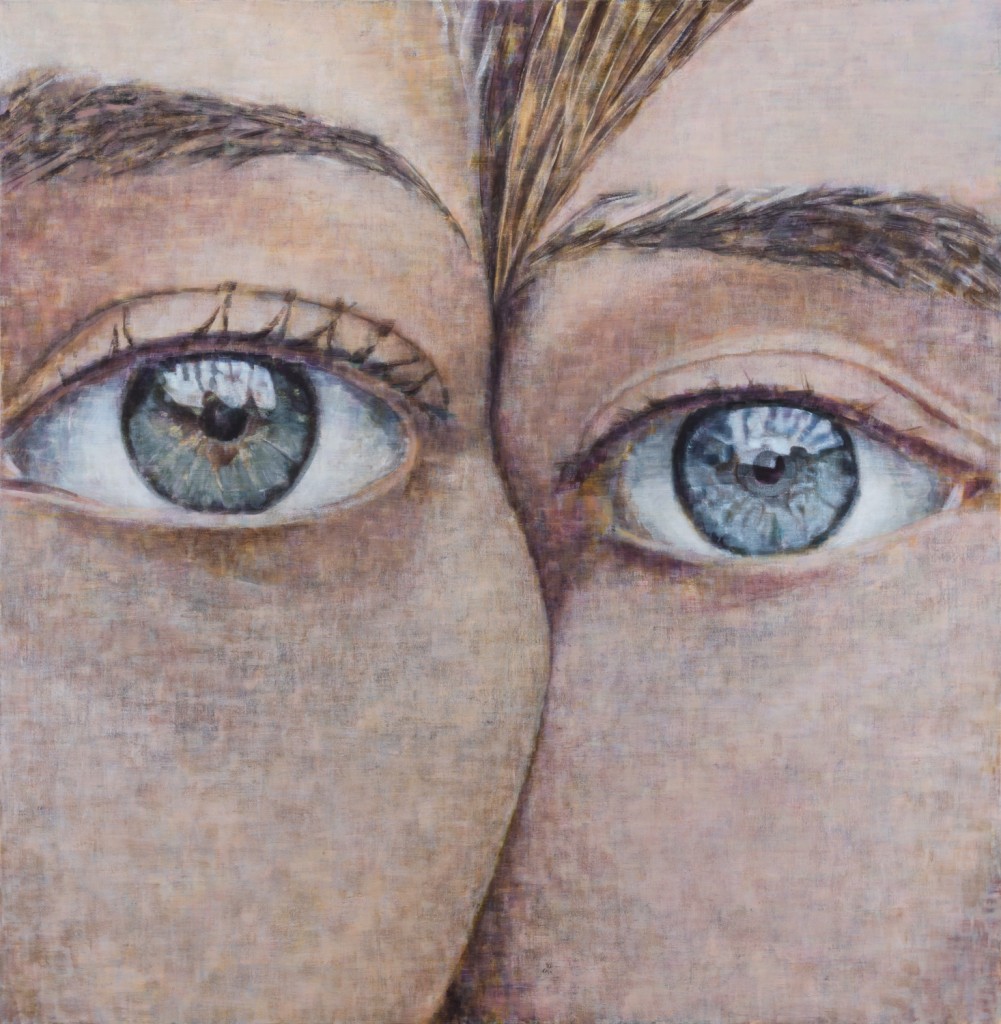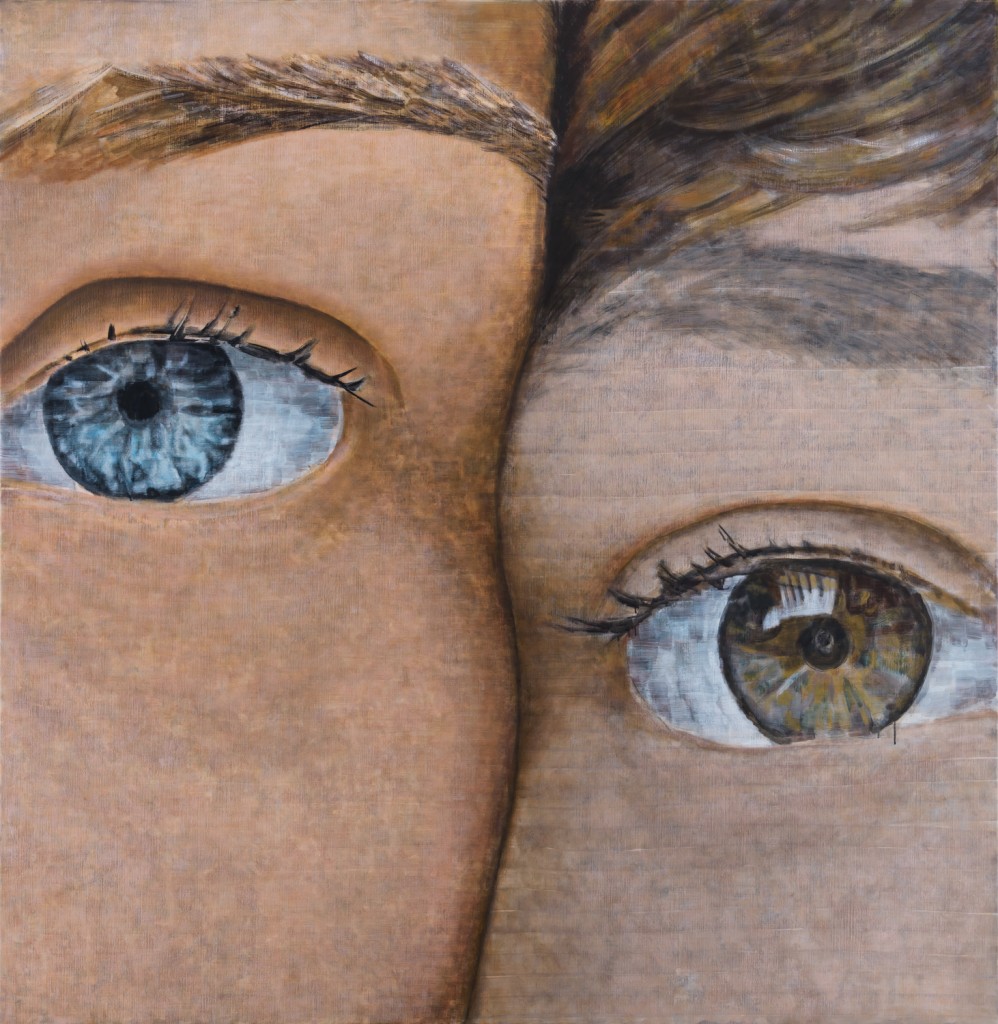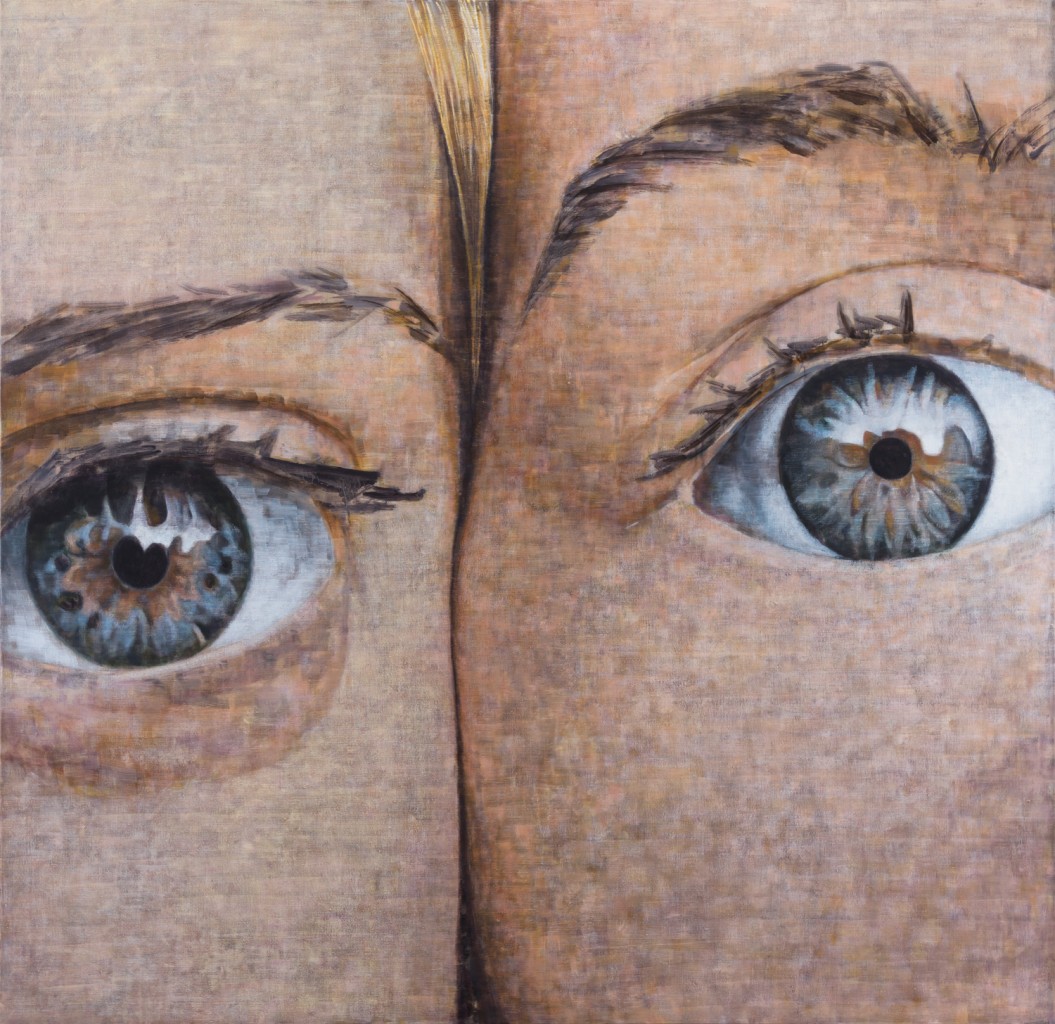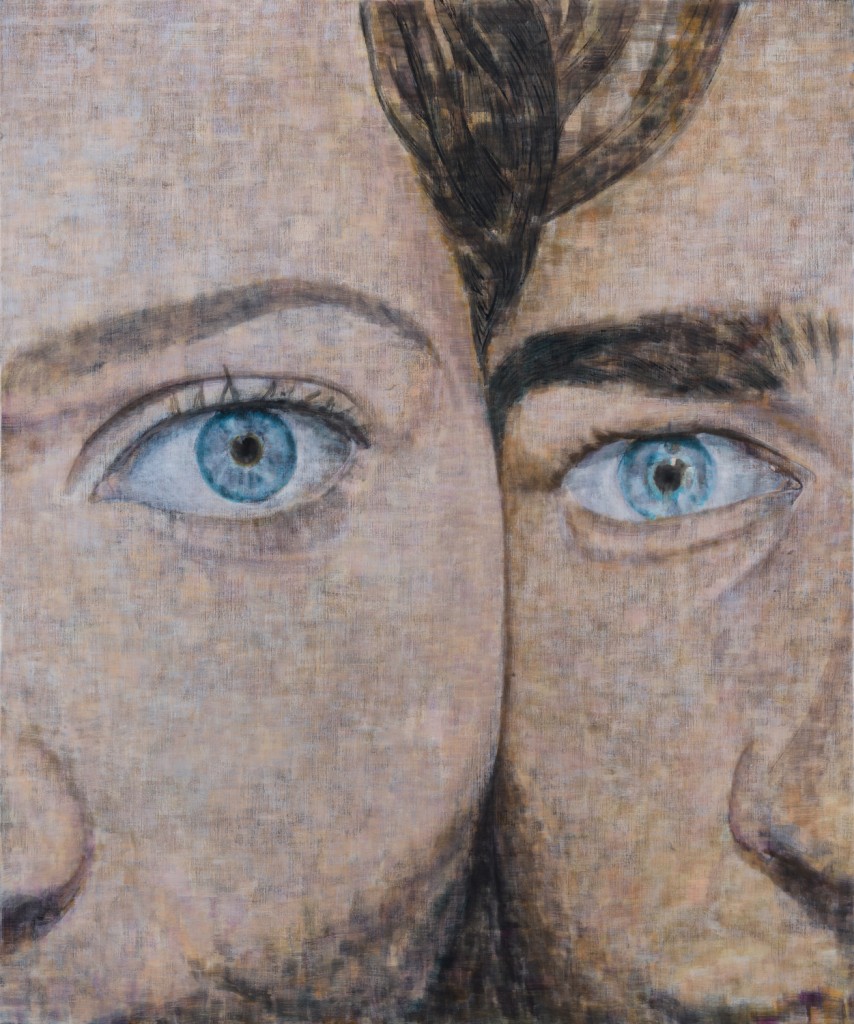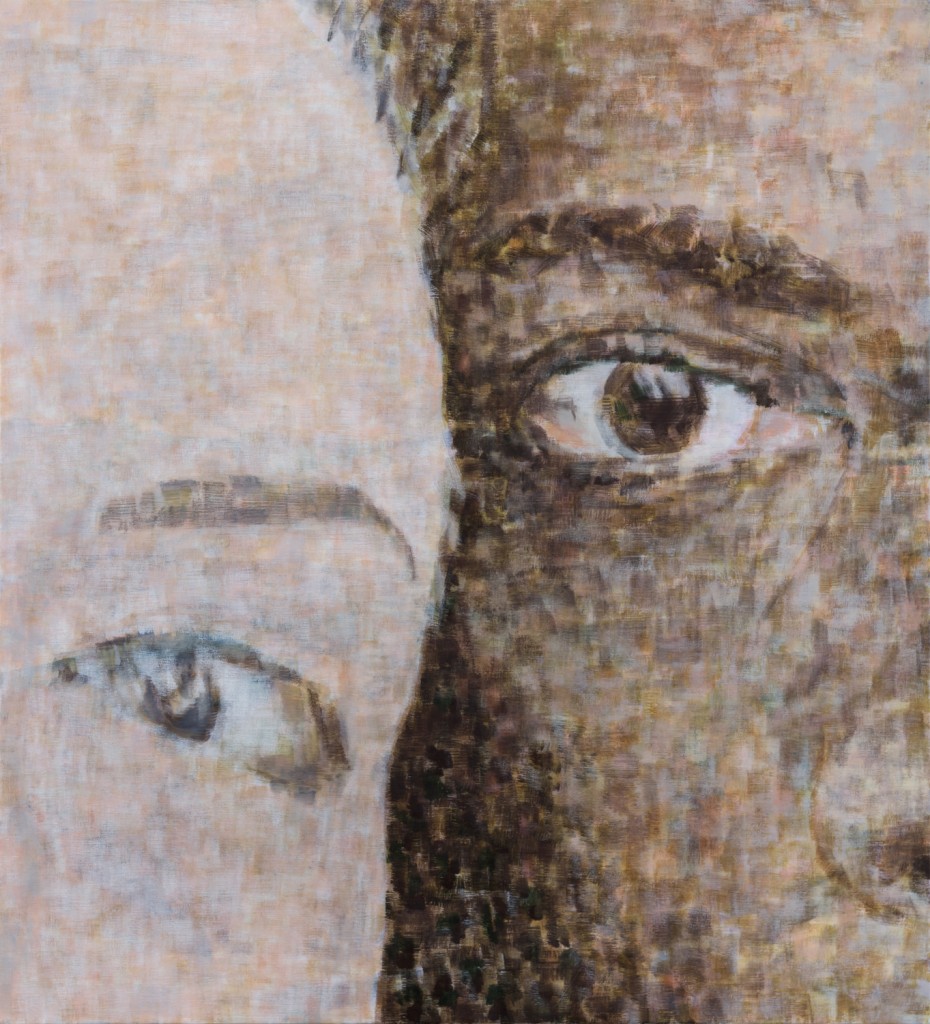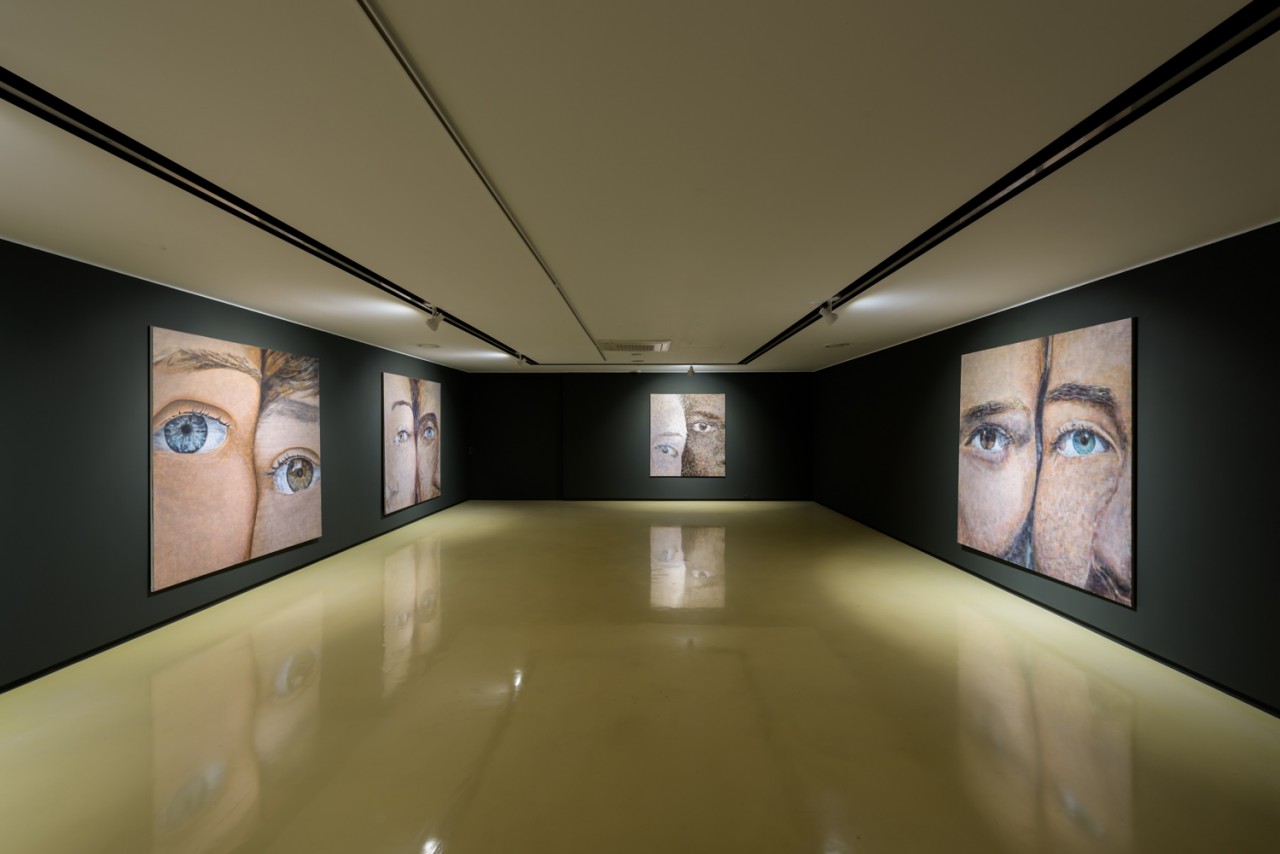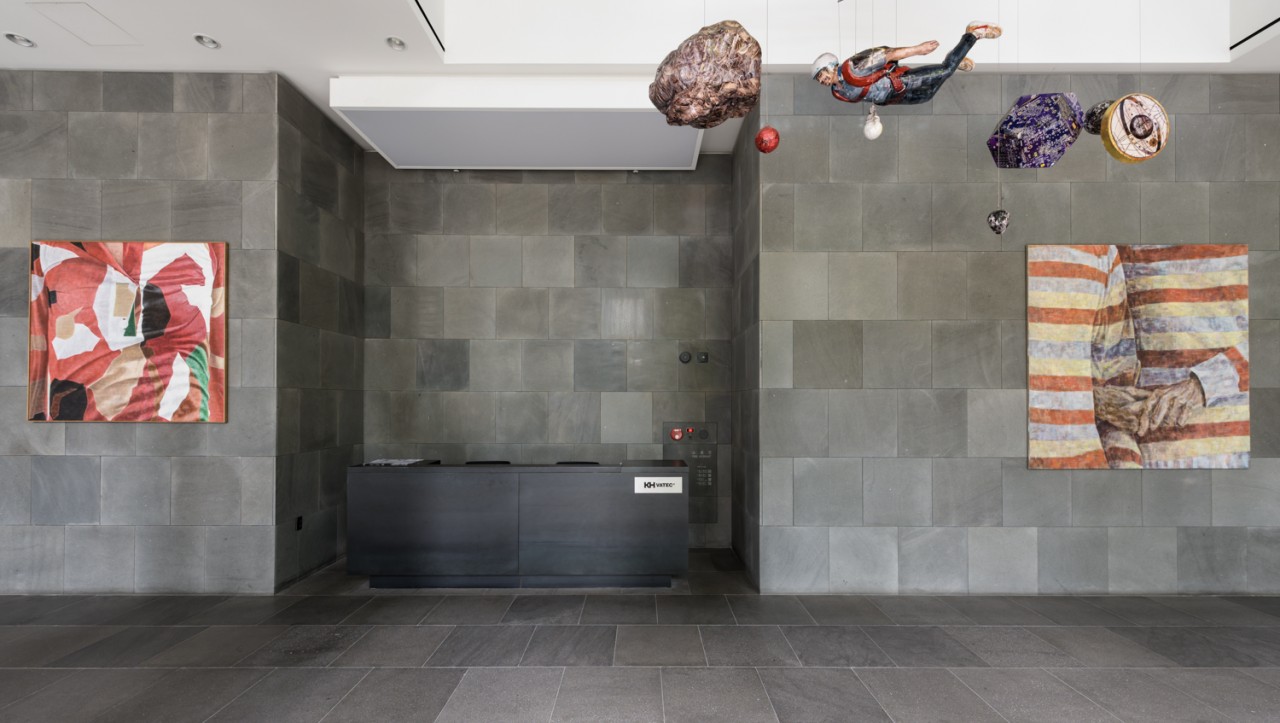Exhibitions
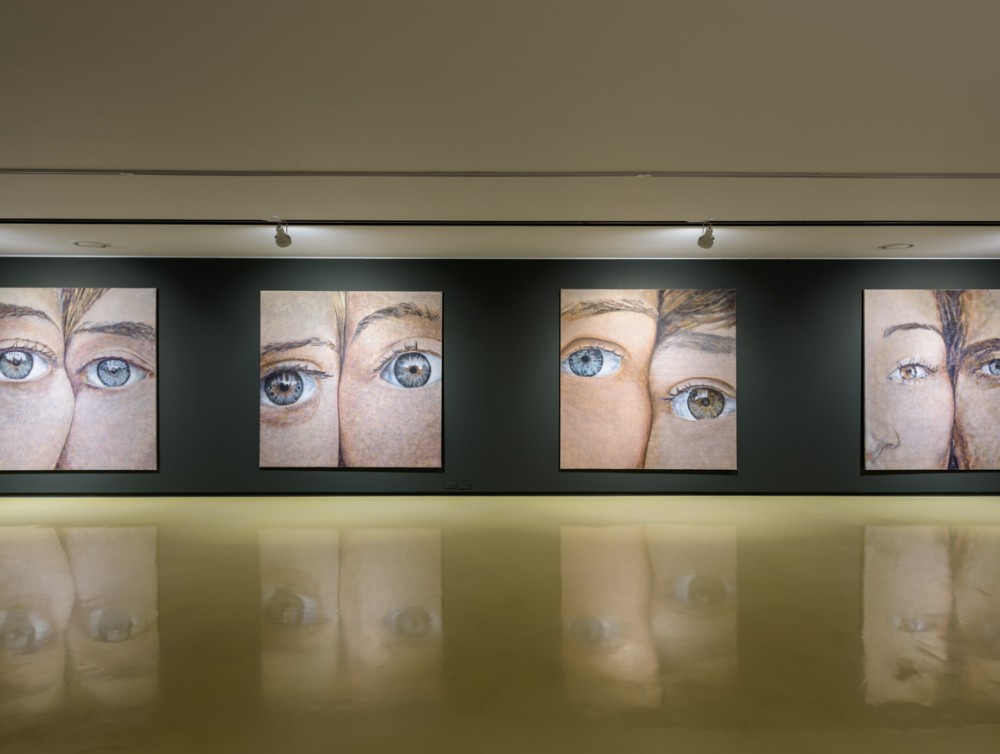
PERIGEE ARTIST #13 강석호
the other
2017.06.08. THU ~
2017.08.12. SAT
<드러난 눈과 모호한 삶>
신승오(페리지갤러리 디렉터)
강석호는 꾸준히 인체를 대상으로 회화 작업을 해오고 있다. 그의 초기 작업은 대부분 옷을 입은 신체를 표현하는데, 인체는 머리와 팔다리가 없는 토르소처럼 등장한다. 이러한 작업들에서는 몸을 직접적으로 묘사하는 것이 아니라 신체를 덮고 있는 옷의 표면을 그려냄으로써 효과적으로 인체의 특징을 제거하고 색과 질감의 형식미를 드러낸다. 이뿐만 아니라 작가는 신체라는 하나의 대상을 반복적인 연작으로 그려내는데, 여성과 남성, 뒷모습과 앞모습, 속옷만 입고 있는 장면과 완전한 누드 등 다양한 소재를 그려 왔다. 그리고 유명인의 모습을 얼굴을 드러내지 않고 그들만의 특징적인 포즈만으로 표현해낸 작업들도 있다. 이러한 그의 작업들은 대상의 전체를 드러내지 않고, 특정 부분을 부각시키는 신체에 대한 미시적인 시선을 통해 익숙한 소재들의 언캐니한 모습들을 보여준다. 어찌 되었든 강석호의 모든 작업들은 신체를 중요한 대상으로 삼고 있다. 그러나 작가의 작업 노트와 전시에 관련된 글들을 읽어가다 보면, 몸에 대한 서사와 소재는 그의 작업에서 그리 중요한 요소가 아닌 것을 알 수 있다. 오히려 이는 작업을 시작하는 발화점에 불과하며, 작업이 진행되어 나가면서는 형식미를 추구하며, 자신만의....
<Exposed Eyes and Ambiguous Life>
By Shin Seung-oh, Perigee Gallery Director
seok ho kang has constantly worked on paintings featuring human bodies. The main subject matter of his early works is a human body wearing clothes. In his early works, the human body appears like a torso devoid of a head, arms, and legs. In these works, he effectively removes the hallmarks of a human body by illustrating the surface of a garment that covers it rather than directly depicting the body itself. In this way he unveils the beauty of form and color as well as texture. In addition, he has continued to work on portraying the human body in his series of paintings featuring a variety of images such as a man and woman, front and back profiles, a body wearing underwear, and a naked body. Some paintings feature the characteristic poses of celebrities without revealing their faces. These works showcase the uncanny aspects of his subject matter from his microscopic perspective toward the body, underscoring specific parts of the body without exposing the whole. While all of his works focus on the human body as the most important su....
신승오(페리지갤러리 디렉터)
강석호는 꾸준히 인체를 대상으로 회화 작업을 해오고 있다. 그의 초기 작업은 대부분 옷을 입은 신체를 표현하는데, 인체는 머리와 팔다리가 없는 토르소처럼 등장한다. 이러한 작업들에서는 몸을 직접적으로 묘사하는 것이 아니라 신체를 덮고 있는 옷의 표면을 그려냄으로써 효과적으로 인체의 특징을 제거하고 색과 질감의 형식미를 드러낸다. 이뿐만 아니라 작가는 신체라는 하나의 대상을 반복적인 연작으로 그려내는데, 여성과 남성, 뒷모습과 앞모습, 속옷만 입고 있는 장면과 완전한 누드 등 다양한 소재를 그려 왔다. 그리고 유명인의 모습을 얼굴을 드러내지 않고 그들만의 특징적인 포즈만으로 표현해낸 작업들도 있다. 이러한 그의 작업들은 대상의 전체를 드러내지 않고, 특정 부분을 부각시키는 신체에 대한 미시적인 시선을 통해 익숙한 소재들의 언캐니한 모습들을 보여준다. 어찌 되었든 강석호의 모든 작업들은 신체를 중요한 대상으로 삼고 있다. 그러나 작가의 작업 노트와 전시에 관련된 글들을 읽어가다 보면, 몸에 대한 서사와 소재는 그의 작업에서 그리 중요한 요소가 아닌 것을 알 수 있다. 오히려 이는 작업을 시작하는 발화점에 불과하며, 작업이 진행되어 나가면서는 형식미를 추구하며, 자신만의 예술관과 삶을 찾아가는 것에 중점을 두는 것으로 보인다.
이를 확인하기 위해서 먼저 작업 초기부터 지금까지의 강석호의 작업에 관련된 글에서 공통적으로 언급되는 이야기들을 살펴보자. 이는 자화상과도 같은 그림, 풍경을 그리듯이 그린 신체, 몸이라는 대상이 중요한 것이 아니라 그리는 행위가 중요하다는 것, 그림이 가지고 있는 서사성 보다는 형식미를 추구하고 있다는 점 등으로 정리된다. 그렇다면 이번 <the other>에서는 이전 언급된 작업에 대한 이야기와 다른 변화를 찾아 볼 수 있을까? 우선 작품에서 눈에 띄는 것은 두 사람의 얼굴과 눈을 그리고 있다는 점이다. 두 사람의 얼굴은 맞닿아 있고 한쪽 눈들이 강조되어 있으며 근육의 표현이 되어 있지 않아 얼굴의 표정을 통해 감정을 파악할 수 없다. 또한 이전의 작업에 사용해온 방식과 다르지 않게 온전히 얼굴이 등장하지 않고 전체의 모습은 잘려 있어 이것이 얼굴을 그리려고 한 것인지 눈을 그리고자 한 것인지 그 의도가 모호하다. 여하튼 한 사람의 얼굴이 아닌 서로의 한쪽 눈만이 강조된 두 명의 얼굴이 나타나는 것은 확실히 이번 작품들이 가지고 있는 특징이다. 그렇다면 이제는 얼굴 혹은 눈이라는 소재를 중심으로 살펴보자. 이번 작품들은 간격, 사이, 틈이라는 단어를 통해 변화를 살펴보는 것이 좋을 것 같다. 두 사람의 얼굴이 서로 맞대어져 있는 모습은 성별 차이나 피부 색으로 구별되는 인종적 차이가 드러난다. 눈은 각 인물의 오른쪽 눈과 왼쪽 눈만 묘사되어 있다. 이러한 작품 앞에 서게 되었을 때 가장 우리에 시선이 머무는 곳은 눈이다. 이들의 눈은 사진을 찍기 위한 동작으로 렌즈를 바라보기 때문에 한 곳을 바라보지만 결코 같은 것을 눈동자에 새기지 못한다. 또한 사진 찍을 때 애정이 잘 드러나는 얼굴을 서로 가장 가깝게 맞대는 자세를 취해 보아도 하나의 사람으로 결합될 수 는 없다. 이것이 작가 작업에서 이야기하고 있는 사람들이 가지고 있는 간격과 틈에 대한 것일 것이다. 얼굴 사이와 사이의 간격은 굴곡진 선으로 구획되는데, 더 자세히 말하면 점차로 왜곡된 곡선으로 나타나며, 그 사이는 깊은 골짜기의 검은 심연으로 침잠되는 어두움으로 표현되어 있다. 이러한 구분은 다양한 관계가 가지고 있는 현실적인 상황을 그대로 보여준다. 우리는 아무리 친하고 서로를 이해하는 관계라고 해도 서로 완벽하게 하나가 될 수 없다. 같은 것을 보아도 어느 정도의 간격 사이에서 넓고 좁아지는 것이지 완벽하게 하나로 일치할 수는 없는 것이다. 오히려 작품에서처럼 서로 가장 가까이 애정 넘치는 사랑스러운 자세를 취한다 해도 이는 오히려 기괴한 모습으로 보일 뿐이다. 또한 커다란 두 눈은 작품 앞에서 관객들로 하여금 그들을 바라보고 있는 자신의 존재를 느끼게 만든다. 각자의 눈동자는 저 너머의 먼 미래를 바라보는 것이 아니라 지금 현재에 시선을 두고 ‘나’를 바라보고 있다. 작품 앞에 서면, 그들의 표정이나 색채가 보이기보다는 그림을 바라보고 있는 나 자신을 느낄 수 있다. 다시 말해 존재하고 있는 비물질적인 형태의 ‘나’ 를 감지하게 된다. 이는 관객들이 작품 앞에 서기 전에 작가가 그림 앞에서 그려내면서 수없이 느꼈을 감정일지도 모르겠다. 물론 이러한 감정조차도 작업을 해나가는 시간 속에서 무뎌져 갔을 것이지만 이러한 상태로의 전환은 강석호가 작업을 통해 예전부터 지금까지 천착해온 화두가 아니었을까? ‘나’라는 사람의 실체 없는 무형의 성격과 본성을 실체를 가진 손을 통해 직접적으로 작품을 만들어 내고, 이 작품이 그 시작점과 다르게 더 이상 물감을 올리기 힘들 정도로의 상태까지 진행됐을 때, 어느 지점에서 결국 ‘나’의 본질 자체도 지워질 정도로 모호해지는 순간이 발생하게 된다. 그리고 그는 작업을 통해 이성과 감성, 개인과 사회, 의식과 무의식의 것들이 교차하는 순간순간을 쌓아나가는 반복적인 행위를 해오고 있는 것이다. 따라서 전시의 제목에 다른 사람이든, 타자이든 모호한 해석이 가능한 <the other>를 사용한 이유는 이 단어 또한 남이 아니라 자기 자신을 포함하는 의미를 내포하고자 했기 때문일 것이다. 그의 작업에서의 특징 중 하나인 반복적인 행위는 지금까지 해왔던 모든 작품의 제목이 <무제>라는 점에서도 찾아볼 수 있다. 이러한 제목 선택은 그가 구체적으로 다른 대상을 그려왔지만, 모든 작품들이 하나의 연작으로써의 관계성을 구축하도록 해준다.
또 다른 한편으로 그의 작업에 대해 엿볼 수 있는 것은 자신의 전시 혹은 작가 노트를 위해 쓴 글이다. 이들은 수필이나 소설의 형식들로 쓰이는데 직접적인 작업에 대한 설명이라기보다는 작가 자신이 일상적으로 살아가면서 생각하는 것들에 대한 글이다. 이런 점들은 그가 대상으로 삼고 있는 것이 인체라는 특정 대상이 아니라 자기 자신이라는 것을 드러낸다. 이외에도 강석호는 여러 건의 전시기획도 해왔다. 이렇게 그는 작품 이외에도 다양한 방식으로 자기 텍스트를 생산한다. 이와 같은 자기 텍스트를 생산하는 것은 스스로의 내적인 성장과 변화를 가져오거나 혹은 지속적으로 발전하기 위함이 아니다. 다시 말해 작업하는 과정이 삶과 밀착되어 있지만, 그것들에 대한 성찰을 통한 자아를 찾아가는 구도의 과정은 아니다. 물론 자신이 속해 있는 시간과 공간에서 외부의 영향을 통해 자극 받는 내적인 특정한 순간을 대상으로 설정하지만, 이를 실제로 작업으로 실체화 시키는 과정 속에서 그 소재와 내용의 의미는 중요하게 다루어지지 않고 소멸되며, 언제나 다시 작가의 시간과 공간으로 귀결된다. 따라서 그가 작품을 지속적으로 물감으로 덮어나가면서 더 이상 물감이 얹히지 않을 때까지 멈추지 않는 것은 그의 본질이자 숙명적인 행위인 것은 아닐까?
사람에게 어떤 특정한 목적이 정해져 있는 행동을 하도록 만들고 기존의 문화인 관념과 관습에 종속시키는 선형주의 그리고 사회적 존재에 의미를 부여하는 비물질적인 것은 사람들의 개인이 가지고 있는 고유의 의미와 무관하다. 이는 운명 혹은 숙명과도 같은 것이다. 또한 예술적 감성은 초월할 수 없는 물질, 한계성, 유한성 속에서 이를 가장 극적으로 깨닫게 되는 지점들을 발생시키고 이는 순간적으로 나타났다 사라진다. 이러한 예술적 요소는 질료와 정신, 정적인 것과 동적인 것, 속박과 자유 사이에 존재하는 감각과 그것에 대한 정열과 이성 사이에 존재하는 대립에 의해 우리에게 세상에 대한 통찰을 가지게 만든다. 따라서 강석호는 자신의 삶을 하나의 예술작품으로 만들기 위해 일상에서 존재를 특징짓는 특별함을 추구하는 것이 아니라 기본적으로 평범하고 일상적인 것들을 꾸준히 경험하고 구축해 나간다. 결국 그가 작업을 통해서 일상적이고 평범한 것들을 반복적인 행위로 옮기는 과정은 새로운 것들을 창조해 내지만, 이는 다시 무위(無爲)로 돌아간다. 이것이 그에게 있어서 작가라는 ‘나’의 존재가 필연과 우연 사이에서 균형을 잡는 방식이며 지속적으로 작업을 해나가는 이유일 것이다.
지금까지 살펴보았듯이 강석호의 작업은 하나의 작품과 시리즈의 구분을 통해 파악하는 것이 아니라 작품 전반에 담겨 있는 흐름과 작가의 삶까지 읽어내야 온전히 이해할 수 있다. ‘나’를 포함한 모든 세계와 개인은 어떤 특정한 목적을 이루어내기 위해 선형적인 방식으로 진행하는 것이 아니고, 원래 그것들이 가지고 있는 속성으로 나타난다. 따라서 그의 작업에서 중요한 것은 작가가 자기 자신의 리듬을 통해 자신의 본질을 알아가는 것이 궁극적인 삶과 예술의 목적으로 작용하는 점이다. 개별적인 자아에서 이를 초월하여 나타나는 것은 반복적으로 나타나는 장면들에서 작가가 순간적으로 공감하고 자신과 동일시할 때 일어난다. 일상의 중복과 과잉, 일상적인 창작행위의 반복, 예술은 결국 끝없는 진보와 미래를 향한 시선에서 나타나는 것이 아니라 되풀이되는 개인의 관습과 습관, 의식들과 합치되는 어떤 현재의 지점들에서 발생한다고 할 수 있다. 그리고 이는 그의 지속적인 작업의 과정을 통해 명확히 드러나는 것처럼 보이지만, 다시 모호해지기를 반복하는 순환적 리듬을 가지고 있다.
강석호라는 한 개인이 만들어 가는 삶과 예술은 결국 개별적인 사람들이 각자 가지고 있는 숙명과도 같은 것이다. 그것을 거부하거나 순응하는 것에 대해 옳고 그름으로 판단할 수는 없다. 이러한 순응과 거부의 충돌을 통해 단지 어느 한 순간 드러나는 특별한 사건과 상황에 드러나는 자신의 삶에 대한 의미를 어떻게 바라볼 것인지 순간순간의 어떤 ‘나’를 직시하고 있는지가 중요하다. 여기서 ‘나’는 나이기도 하면서 동시에 타자로도 나타난다. 이러한 과정들에는 무엇 하나 확실한 것은 없지만, 그의 작업이나 글, 전시 기획 등이 축적되어 나가면서 그 방향성이 어렴풋하게 점진적으로 드러나고 있다. 그리고 이러한 다양한 활동은 작가가 작업에서 보여주듯이 한 순간의 현재가 연속적으로 이어지는 시간 속에서 강하게 인지하게 되는 경험들을 통해 발생하는 충동같이 시작된다. 그리고 지속적으로 반복되는 삶과 작업의 과정들을 통해 나타나는 것은 같음이 아니라 다름이라는 차이를 드러내기 위한 방편이며, 이들은 작품을 분석하는 과정에서 도출되는 특정한 단어와 표현으로 규정되지만, 이내 특정함에 구속되지 않는 자유로움과 모호함의 특질을 획득하게 된다. 이렇게 강석호의 작업에서 우리가 발견하는 것은 작품 자체가 가지고 있는 대상에 관련된 서사적인 이야기와 의미로만 바라볼 수도 없고, 작가가 이야기하듯이 형식미의 연구의 측면 만으로도 파악할 수 없다. 다만 우리가 추측할 수 있는 것은 그가 그의 삶을 통해서 생산해 내는 다양한 자기 텍스트들은 지금까지 살펴본 것과 같이 개인의 단선적인 시간이 분절되는 순간에서 시작되어 그것들을 반복하여 보여주는 명확하고 보편적인 방식에서부터 모호함에 이르는 과정들을 고스란히 담아내고 있다는 점이다. 따라서 우리는 그의 작업을 통해 작가의 삶과 예술을 혹은 우리 자신의 삶을 순간적으로 바라볼 수 있을 것이지만 이내 그것은 다시 우리가 획득하여야 할 모호한 이야기로 되돌려 보내지게 될 것이다.
By Shin Seung-oh, Perigee Gallery Director
seok ho kang has constantly worked on paintings featuring human bodies. The main subject matter of his early works is a human body wearing clothes. In his early works, the human body appears like a torso devoid of a head, arms, and legs. In these works, he effectively removes the hallmarks of a human body by illustrating the surface of a garment that covers it rather than directly depicting the body itself. In this way he unveils the beauty of form and color as well as texture. In addition, he has continued to work on portraying the human body in his series of paintings featuring a variety of images such as a man and woman, front and back profiles, a body wearing underwear, and a naked body. Some paintings feature the characteristic poses of celebrities without revealing their faces. These works showcase the uncanny aspects of his subject matter from his microscopic perspective toward the body, underscoring specific parts of the body without exposing the whole. While all of his works focus on the human body as the most important subject, his statements and writings pertaining to his works and exhibitions clarify that any narrative on the body or the body as his subject matter is not very important. Such an element just works as a trigger for initiating his work. He instead seems to focus on seeking the beauty of form and exploring his own distinctive art and life.
The comments commonly mentioned in writings concerning his works from his early years must be reviewed to confirm this. Such comments are mainly about paintings like self-portraits, the body portrayed like a landscape, laying more emphasis on the act of painting than the body as an object, and his pursuit of the beauty of form rather than any narrativity. If this is done, can any changes be discovered in the other from his previous pieces? The most noticeable feature above everything else is his portrayal of the face, a subject matter he had never addressed in his previous paintings. This serialized work features two people whose faces are in contact with one another and one of each of their eyes. Their emotions cannot be grasped through their facial expressions as no facial muscles have been illustrated. Similar to the style he used in his previous works, the faces have been cut by the edges of the painting. It is unclear whether he intended to focus on the faces or the eyes. This series is obviously characterized by the faces of two individuals, not just one person, with a single eye from each one being emphasized.
Let us now take a closer look at subject matter such as faces and eyes. The keywords that can be adopted to analyze these works are “space”, “in-between” and “gap.” The gender and racial differences of the two faces are distinguished by their different complexions. These paintings feature the right and left eye of each person which catch our attention. Their eyes do not seem to capture the same thing even though they are facing in the same direction. These faces, even if they are laden with affection and are in close contact, cannot be combined into one. This is perhaps in reference to the “space” or “gap” that the artist mentions in his works. The faces are divided with winding lines whose curves gradually become distorted. The space between the two is darkly expressed in a way that is similar to a black abyss or a deep valley. This division refers to the reality in which our diverse relationships exist. No matter how intimate we are, we cannot be perfectly one and the same. Even if the people have an affectionate, lovely demeanor, as in these works, it still comes off as rather bizarre. Their large eyes allow viewers to feel their own existence before his painting. Each eye looks at “me” as opposed to a faraway future. As viewers stand in front of his painting, they can feel themselves as they look at it as opposed to the looks or colors of others. In other words, I can sense “me” that exists in a non-material form. This may be the same feeling that seok ho kang frequently feels in front of his work. May any shift to this state be the issue he has inquired into through his works although such a feeling has more than likely become dulled as he executed his work over time?
“I” turn out my work with my substantial “hands” while depending on my intangible character and nature. When this work gets to the state where no more paints can be applied, the moment of blurring or erasing even “my” nature arises at some point. He also has involved repetitive acts of amassing the moments in which reason and sensibility, individual and society, and the conscious and the unconscious cross paths in his work. He has adopted the other that can be interpreted ambiguously probably because he intends to include his own meaning alongside the other’s. One of the hallmarks of his work, repetitive actions can also be found in the fact that the title of his oeuvre has been Untitled. The selection of this same title stands for his intent to form relationships with all of his works as a series while he has painted a wide array of objects.
Meanwhile, writings he wrote on his exhibitions give a glimpse of his work. These written in the form of an essay or novel are not attempting to account for his work but are thoughts about his daily life. This reveals that what he intends to represent is not any specific object of the body but the artist himself. He has also engaged in curating several exhibitions. As such, he produced his own text in a wide array of ways. This production of his own text is neither to bring about any inner growth and change nor any constant evolvement. That is, the process of his work is inextricably bound up with his everyday life but it is not a process of exploring his true self through introspection on his work. Although he sees a specific moment when he is inspired by external influences or stimuli as the object of his work in the time and space he belongs to, the meaning of its subject matter and content disappear in the process of realizing them through his work, not addressing them seriously. This always returns to his own time and space. Thus he does not stop applying paints to his works until no more paints are required. Isn’t this his nature or a fateful action?
What makes people do some predestined acts, what makes them subordinate to preexisting culture, stereotypes, and conventions, and something immaterial that lends meaning to social beings, has nothing to do with meanings intrinsic to each individual. This is like destiny. Any artistic emotion brings about some point where one realizes limitations and finitudes he cannot get over, momentarily appearing and disappearing. Such artistic element enables us to have insights into the world with the confrontation between matter and spirit, the static and the dynamic, restriction and freedom, and sense or passion and reason. kang does not pursue any specificity in order to make his life a work of art but constantly experiences common everyday things. He creates new things in the process of transporting such ordinary quotidian things to his works of art, but this after all has been fruitless. This is a way of balancing himself as an artist between inevitability and coincidence as well as a reason why he has consistently worked.
As reviewed above, kang’s works can be fully understood by reading out the flows of his oeuvre and even his life rather than being grasped through distinction of his individual work or series. All the worlds and individuals including “me” do not progress in order to attain some specific purpose in a linear way but appear with their original traits. Thus what’s important in his work is that the ultimate objective of his life and art is to figure out his own nature through his own inner rhythms. He is able to transcend this only when he instantly sympathizes with repetitively occurring scenes and identifies himself with them. Art can be said to have been generated not from any perspective toward endless progress and the future but at some point where each individual’s habit, conventions, and consciousness are conjoined. This seems clarified through the process of his constant work but it has a circular rhythm that repeats ambiguity.
The life and art kang has shaped as an individual is after all like the destiny each individual is influenced by. Whether we accept or reject it, this cannot be judged by what is right or wrong. What matters is how to view the meaning of my life that reveals itself at some moment according to a specific event and situation through a collision between adaptation and rejection. “I” here is both “me” and the other at the same time. Despite there being nothing definite in this process, the orientation of his work has been revealed vaguely and gradually as he accumulates experience of painting, writing and curating. His many activities are triggered by something like an impulse he feels over a series of time, as showcased in his work. What emerges in the process of constantly repeated life and work is a means to unmask differences, not similarities. These are defined by specific words and expressions in the process of analyzing his own work, but they soon gain the qualities of unrestrictedness and ambiguity not wedded to any specificity. What we discover in his work cannot be seen in terms of the narrative and meaning his works convey and cannot be grasped in terms of a study on the beauty of form he mentions. What we can conjecture is that, as reexamined above, the diverse text he has produced so far demonstrate the process of arriving at ambiguity from the moment when each individual’s linear time splits and an apparent, universal way of repetitively showing this. Thus we may be able to look back on his life and art as well as our own lives through his work, but it will soon be sent back again to an ambiguous narrative.



